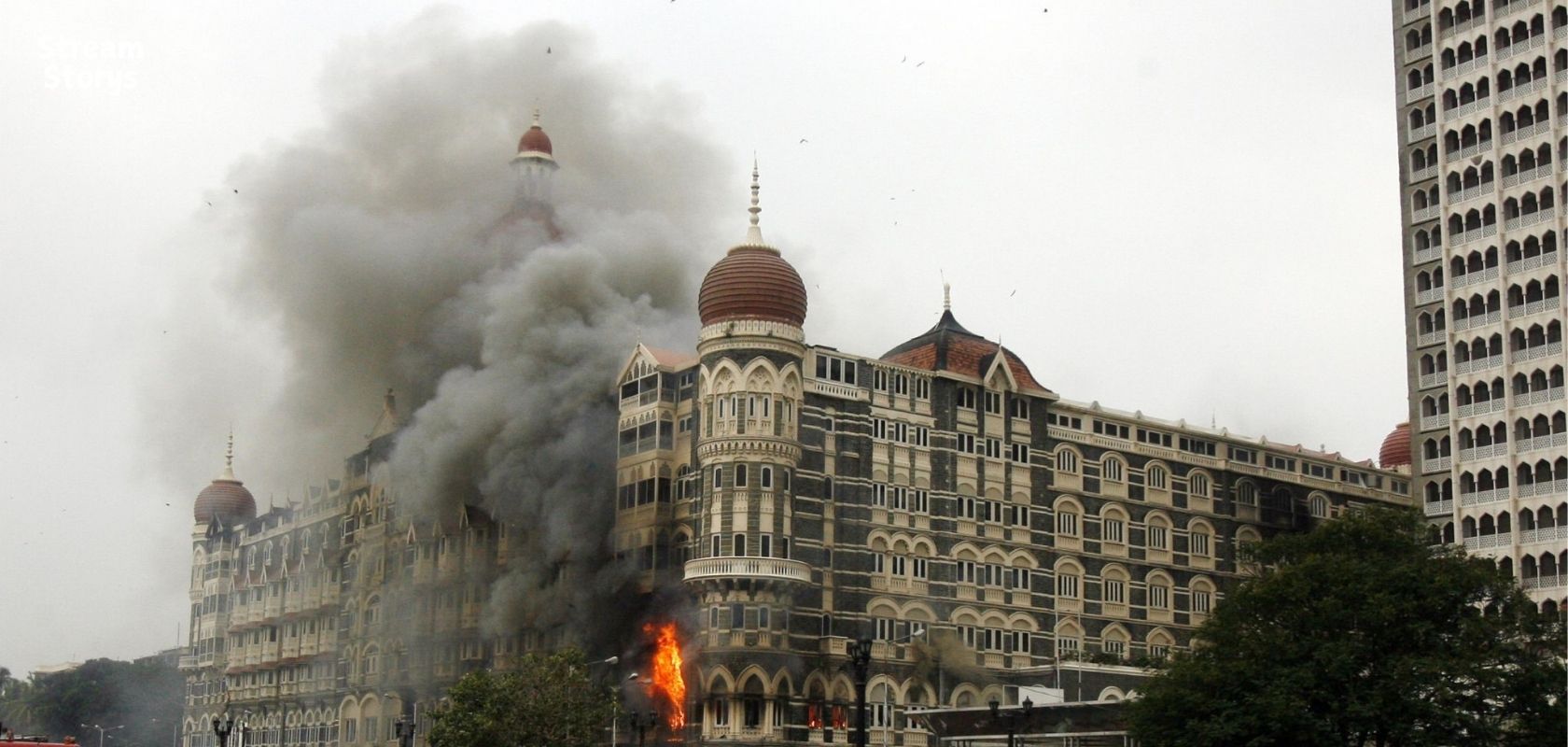
26/11 Mumbai
On November 26, 2008, Mumbai, India’s financial capital, was hit by one of the most devastating and horrific terrorist attacks in its history. The day started like any other, with thousands of people commuting to work, tourists exploring the city, and families going about their daily lives. However, by the end of the day, the city would be forever scarred, and the lives of its residents would be changed forever.
A group of ten heavily armed terrorists, who had infiltrated the city by sea, launched a series of coordinated attacks at multiple locations in Mumbai. Their primary targets were prominent places that attracted both locals and international visitors. Among the targets were the Taj Mahal Palace Hotel, Oberoi Trident Hotel, CST Railway Station (Chhatrapati Shivaji Maharaj Terminus), and Nariman House, where a Jewish community was residing. The attackers carried out their attacks in a ruthless and methodical manner, killing indiscriminately and creating a wave of panic across the city.
The first of the attacks occurred at the CST Railway Station, a busy hub for commuters, where two terrorists opened fire on innocent people. They sprayed bullets on unsuspecting travelers, killing dozens in just a few minutes. The attackers also set off explosives, causing more destruction. As the station became a scene of chaos and bloodshed, terrified passengers ran for their lives, while police and emergency personnel rushed to the site.
Meanwhile, the attackers also stormed the luxury hotels, the Taj Mahal Palace and Oberoi Trident. Armed with assault rifles, grenades, and explosives, they took hostages and moved through the buildings, leaving a trail of death and destruction. The hostages, many of them foreigners, were trapped in their rooms, unable to escape. As the hours passed, a tense standoff between the terrorists and Indian security forces ensued.
Inside the Taj Mahal Palace Hotel, guests and hotel staff were trapped in rooms, with terrorists taking control of several floors. The attackers set fire to parts of the building and moved from one room to another, searching for people to kill. Some of the survivors later described the terror they faced as the gunmen moved through the hallways, shooting anyone they came across. Hotel staff, many of whom were unarmed, tried to protect the guests at the risk of their own lives.
The police and National Security Guard (NSG) commandos quickly arrived at the scene to rescue the hostages and eliminate the terrorists. A fierce battle between the security forces and the attackers unfolded over the course of nearly three days. As the commandos stormed the hotels, the terrorists fought back, firing at them from windows and hallways. The city’s police force, including officers like Hemant Karkare, Vijay Salaskar, and Ashok Kamte, also played a key role in the rescue operations, but many of them tragically lost their lives in the line of duty.
The standoff at Nariman House, where the attackers took a Jewish family hostage, also became one of the focal points of the tragedy. The victims included a rabbi, his wife, and their children. The terrorists held them captive and killed them in cold blood. The Indian authorities, including the Israeli embassy, worked together to resolve the situation, but by the time the operation ended, the family had lost their lives.
The attacks lasted for over 60 hours, and in the end, 166 people were killed, including 18 security personnel and 26 foreign nationals. More than 300 people were injured. The survivors were left with physical and emotional scars that would last a lifetime. Families mourned the loss of their loved ones, and the city of Mumbai was forever changed by the brutality and horror of the attacks.
The aftermath of the 26/11 Mumbai attacks saw a nation in shock and disbelief. People were angry and saddened by the loss of so many innocent lives. The attacks were not only a reminder of the ever-present threat of terrorism but also a wake-up call about the need for improved security and intelligence. The government and security forces were criticized for their lack of preparedness, as the terrorists had planned and executed the attack with shocking precision.
The attacks also brought the world’s attention to the threat of terrorism and its impact on ordinary people. The bravery of the police officers, commandos, and hotel staff who risked their lives to save others was widely praised. Their courage became a symbol of hope and resilience in the face of unimaginable violence.
The 26/11 attacks also led to significant changes in India’s security policies. The government introduced stronger anti-terrorism laws, and the country’s intelligence agencies were restructured to improve their ability to detect and prevent such attacks. The Mumbai attacks served as a grim reminder of the need for vigilance and preparedness in the face of global terrorism.
The memory of those lost on that fateful day lives on in the hearts of the survivors and the families of the victims. Every year, as the anniversary of the attacks approaches, people across India pause to remember the lives that were taken, the sacrifices made by the security forces, and the resilience of a city that refused to be broken. The 26/11 attacks left a permanent mark on Mumbai, but they also showed the world the strength and spirit of the people who call the city home.
Credits
Posters : Photoshop, Meta AI, Canva. Designed by Jessi Hemanth